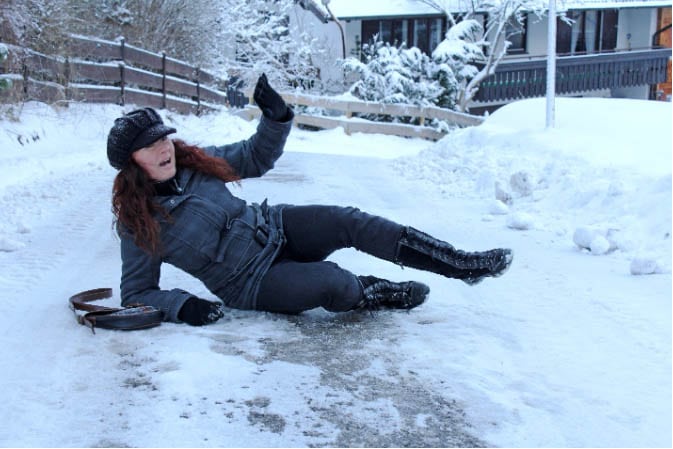The Known and Obvious Danger Defense in a Premises Liability Case
In a premises liability case, such as a slip-and-fall case, the defendant may attempt to make a
claim that the accident occurred because there was a known and obvious danger that should have been
apparent to the person who fell. This known and obvious danger may be an icy parking lot, or a pothole
that should have been obvious to the person. In cases where the defendant makes a known and obvious
danger claim, they may attempt to shift the blame on to the plaintiff and say that the plaintiff has the
burden of showing that the danger was not known and obvious. However, Indiana courts have stated
that this is not how these cases work.
The Elements a Defendant Must Prove to Show the Danger was Known and Obvious
In the Indiana case Podemski v. Praxair, Inc. the court determined what a defendant must show
for a danger to be known and obvious to a person on their property. In Indiana, this defense really only
comes into play when the plaintiff on the property is an invitee and was allowed on the property for a
commercial reason.
According to the court in that case, for something to be known, the invitee:
- Has knowledge of the condition,
- Appreciates the danger it involves, and
- Appreciates the probability and gravity of the threatened harm.
This is just one part of determining if the danger was apparent. For the danger to be obvious, a person
who is exercising ordinary perception, intelligence, and judgement will recognize the danger and the risk
involved. The Court of Appeals in Indiana set out a four-step burden to prove what is known and obvious
to someone. However, there are four issues within this burden that can be used to show that the danger
was not “open and obvious”:
- The danger is hidden from view;
- The area of the fall has a unique feature;
- Prior invitees fell in the same area; and
- There are questions as to the timing of when the invitee had knowledge of the dangerous
condition.
If the plaintiff can show there are facts as to any of the above issues then they can defeat any motion by
the defendant attempting to show that the danger was open and obvious.
Can I do Anything if the Defendant Proves the Danger was Known and Obvious?
Even if the defendant does show that the danger the plaintiff is suing about was known and
obvious, the defendant can still be found negligent. Under the Comparative Fault Act, “the comparative
knowledge of a possessor of land and an invitee regarding known or obvious dangers may properly be
taken into consideration in determining whether the possessor breached the duty of reasonable care
under sections 343 and 343A of the Restatement (Second) of Torts.”
In determining whether the defendant might have been negligent, courts ask three questions.
Did the landowner know or by the exercise of reasonable care discover the dangerous condition and
should they have realized that it involved an unreasonable risk to invitees? Should the landowner have
expected that invitees would fail to protect themselves from the danger? Did the landowner fail to
exercise reasonable care to protect the invitee?
Even if a landowner is not considered negligent for failing to warn the invitee of the danger,
they still may be liable for failing to reduce that danger. Oftentimes, if a landowner files a motion of
summary judgement, the above questions and their answers are key to moving forward to trial or an
offer to settle the case from the landowner to the invitee.
Thoughts on Known and Obvious Danger Defense
The Known and Obvious Danger defense is often brought up in premises liability cases. Slip-and-
fall cases are an abundant example. However, it is important to note that this defense does not nullify
the duty that a landowner must give to invitees. The premises must still be safe, and even if the danger
is open and obvious, it is still the duty of the landowner to notify invitees of that danger.
If the person who is injured can prove that the danger was not known and obvious, it will easily
defeat the landowner’s motion and contention that it was. The above factors and questions are those
that attorneys and courts will look at when trying to determine if a danger was known and obvious, and
if it was, if the landowner was still negligent.
Have You Been Injured on Someone Else’s Property or the Property of a Store or Corporation?
Recently injured in an accident and sorting through what to do about your personal injury case?
Contact Hurst Limontes LLC today to receive a consultation today from one of our personal injury
attorneys!





